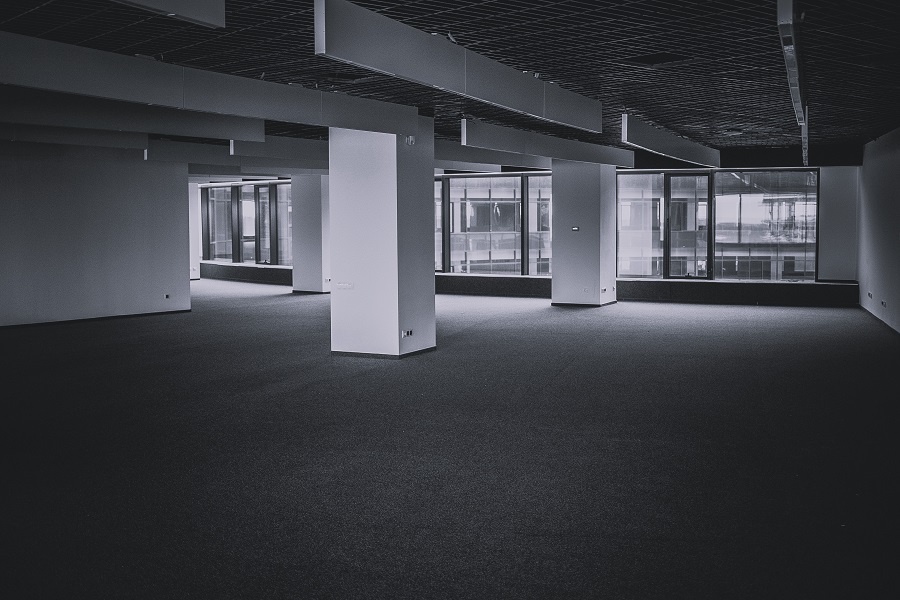There has been much talk about offices heading for the buffers. The nightmare scenario is many thousands of office buildings being deemed virtually worthless as leases come up for renewal, leaving owners and even lenders run aground. Landlords, investors and financiers have all been looking over their shoulders nervously.
This is compounded by the longstanding anxieties around retail due to the move from bricks and mortar to more online shopping. Charlie Munger, Warren Buffett’s right-hand man, has warned of a major pullback in lending to commercial property. He argues that American banks are full of bad loans associated with previously lucrative assets.
Yet there has been some moderately good news about the future of the office lately. Zoom is telling its employees they need to spend more time there. The company that is synonymous with home working wants those who are less than 50 miles away to show up at least twice a week.
It’s a cautious shift, but numerous other companies have introduced (somewhat) tougher requirements since the pandemic. Apple and Amazon expect their employees to make the commute three times a week.
Meanwhile, Elon Musk’s Twitter announced a few months ago that employees should be in the office full time – reversing the previous rule that they could be home-based every day. So where is this market heading?
The changing market
It is important to note that lots of commercial assets continue to perform well. Discount retailers Aldi and Lidl are still going from strength to strength, even without much internet presence. Factory demand is up by nearly a third year on year from businesses “nearshoring” in response to heightened geopolitical tensions.
Across the board, there’s always some churn in commercial vacancies as the market ebbs and flows. Nonetheless, there’s a lot of empty space at the moment. Office vacancy rates in England are generally about a percentage point higher than the average over the past five years.
Upcoming research from Northumbria University has looked at Manchester, Birmingham, Bristol, Leeds, Liverpool and Newcastle. It found 8.5 million square metres of empty commercial space worth £653 million, incurring an empty tax liability of £334 million. Around a third is offices, while a fifth is retail, with most of the remainder for industrial purposes. We don’t have the data to compare previous years, but it’s a substantial amount of unused space.
Underlying these concerns are disruptions in the market. Many institutional investors who have traditionally built their portfolios on “prime” retail properties and office blocks in city business districts now face a situation where the assumptions and values underpinning these assets are being questioned. With occupiers increasingly preferring smaller, more flexible and inviting buildings, the old model of large “anchor” retail stores or major corporate tenants committing to long leases is increasingly under threat.
Ever since it became easier to invest in commercial property in the 1960s, the market was landlord-led. In other words, landlords mostly prescribed the spaces within which tenants and employees work.
Now, tenants increasingly hold the whip hand. Landlords have been creating more attractive “destination” hubs designed for a generation of workers who come into the office less regularly, and want them to be places to meet, socialise and collaborate.
Spotify would be one example. It opened new London offices a couple of years ago with lots of emphasis on lounge spaces and big booths, which has since been rolled out across its global network. Sales support group Salesforce has also been making big changes, opening a major hub in Dublin in 2022 with 70% more collaboration space than previous offices and a heavy emphasis on sustainability.
Where we’re heading
The number of tenants looking for large stores, shopping centres and big uninviting offices is likely to keep falling. The same goes for those with poor sustainability ratings, long leases and few nearby shops and childcare amenities. Single-use locations like Canary Wharf and office parks dominated by traditional grid-like designs are at most risk because they are least appealing and don’t lend themselves to adaptation.
Buildings like these are becoming stranded assets, not just because of their physical attributes but also because no one really knows what they are worth at the moment. This makes it harder to sell them on. Landlords who still think employees will return to old habits are clearly going to pay the price.
There’s a rough analogy with what has happened in retail: companies that failed to move with the times and continued to saddle themselves with huge floorspaces and long leases have tended to struggle the most. The failure of Debenhams would be a good example.
The Zoom announcement on office working indicates that we don’t yet know where the new equilibrium will be, but it certainly doesn’t look like we’ll be returning to the world pre-COVID. Clearly, there is going to be a painful readjustment in the office sector. It’s difficult to make predictions, but if the Apple and Amazon three-day office weeks become the norm, that points to considerably smaller requirement.
That doesn’t mean a simple 40% reduction, because there will still be days when a larger proportion of a workforce needs to be in the office. But it does point to lots of surplus buildings, as well as bad loans and writedowns on balance sheets – particularly with interest rates much higher than in the 2010s.
The challenge for landlords, investors and financiers is to shelter themselves by learning to serve the demands of modern business and new ways of hybrid working. While some property valuations will inevitably depreciate, others will either hold their value or even increase. If lenders allow some leeway during this transition rather than foreclosing aggressively, hopefully the worst pain can be avoided.
This article was originally published in The Conversation and is republished here with permission.








